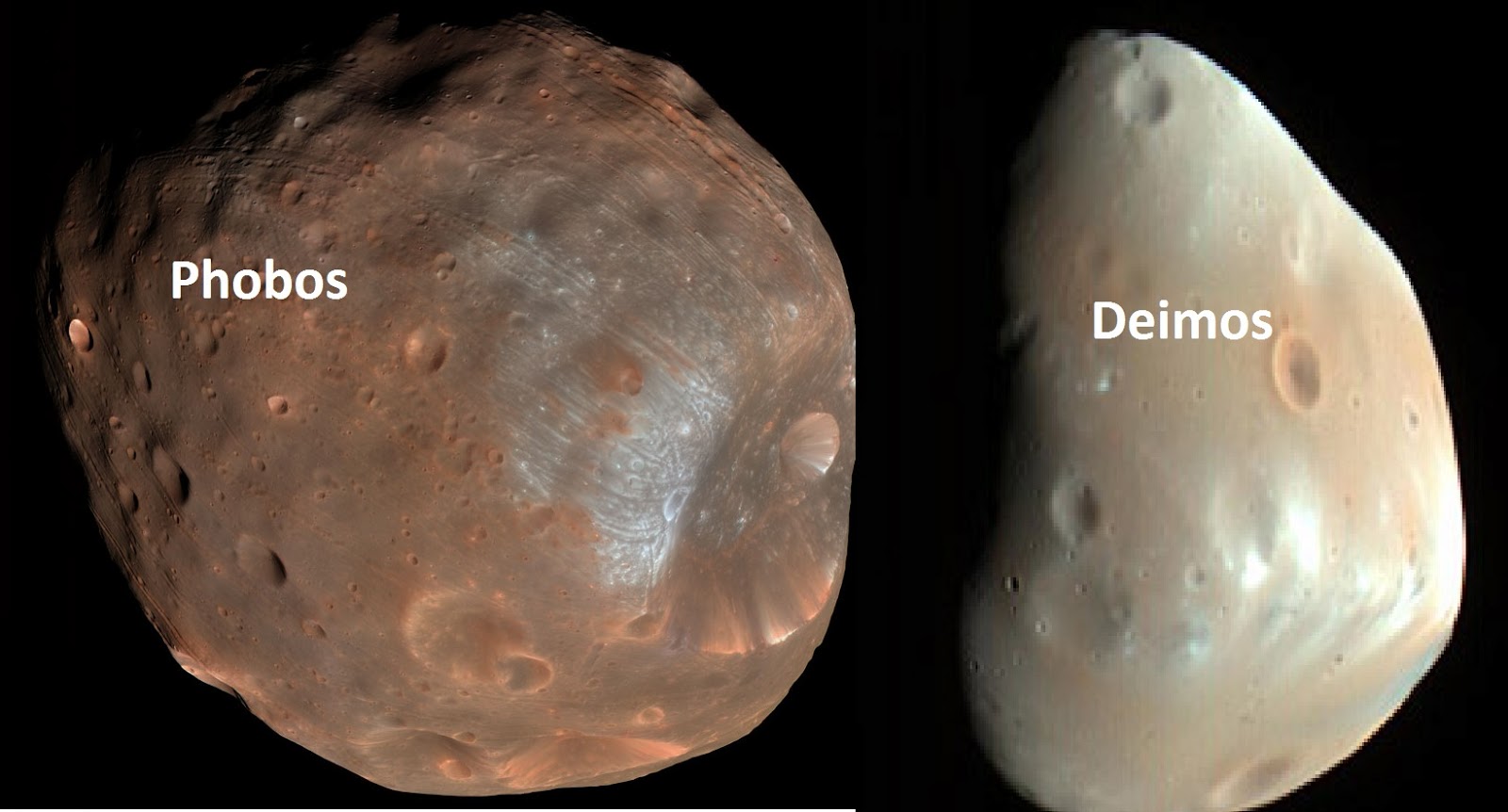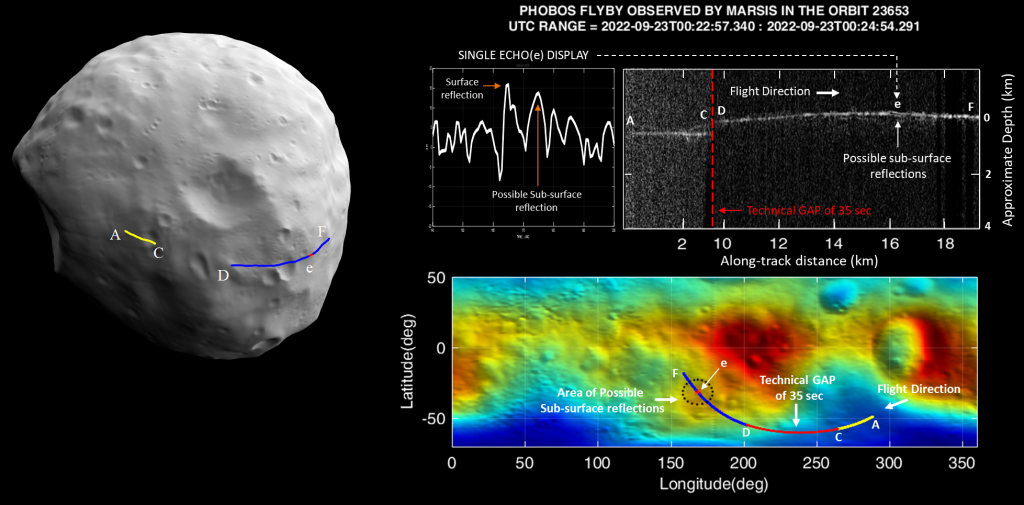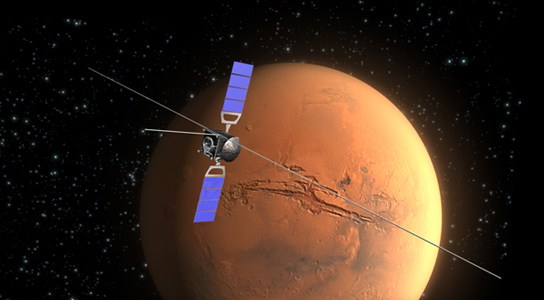
Mystery of Mars’ satellite: Strange structures discovered inside Phobos
The European Mars Express spacecraft was able to study the underground surface of the Mars moon Phobos at such a depth that it has not been studied to date. As a result, the spacecraft managed to get clues about unknown structures, which can become the key to find out the origin of this satellite, reports Space.com.
New Mars Express software may solve the mystery of Phobos' origin
Mars Express, which has been orbiting Mars for 19 years, came as close as 83 kilometers to Phobos on September 22 and was able to probe its subsurface using the updated software of its MARSIS (Mars Advanced Radar for Subsurface and Ionosphere Sounding) instrument.
Gaining insight into Phobos' internal structure may be key to solving the mystery of its origin.
"We are still in the early stages of our analysis, but we have already seen possible signs of previously unknown features beneath the surface of this moon," said Andrea Cicchetti, a member of the MARSIS scientific team at the Italian National Institute of Astrophysics (INAF).

Mars has two moons, Phobos and Deimos, named after the gods of "fear" and "panic" in Greek mythology. Unlike the main moons of our solar system, Phobos and Deimos are small—only 27 kilometers and 15 kilometers wide, respectively. They have the composition of carbonaceous C-type asteroids, as well as an asteroid-like irregular shape, which has raised suspicions that they are actually stray asteroids that ended up there due to the gravitational pull of Mars.
However, the orbits of both Phobos and Deimos pass over the equator of Mars, and both orbits are extremely circular, suggesting that they formed around Mars. If they were stray asteroids, they would have had more elliptical orbits in various planes.
"It is an open question whether the two small moons of Mars are captured asteroids or consist of material torn from Mars during the collision," Colin Wilson, a scientist on the European Space Agency's Mars Express mission, said in the same statement.
How does MARSIS work?
MARSIS has a 40-meter-long antenna that transmits low-frequency radio waves to the surface of the object being studied. Most of the radio waves are reflected immediately after reaching the surface, but some of them penetrate deeper where they meet transitions between layers of different composition and structure and reflect them. The stronger the reflection in the received "radargram," the brighter the returning radio signal.
The radar image from Phobos shows a bright line that is divided into two parts and labeled A-C and D-F, respectively. Section A-C was captured using the old MARSIS program to compare with section D-F, which uses the new program and which shows more detail. The main bright line is a reflection of Phobos's surface. But below it there is evidence of fainter lines, which may simply be interference caused by surface detail, but may also be caused by subsurface structures.

A radargram obtained by MARSIS during its flyby of Phobos on September 23 reveals the "echoes" that occur when the radio signal emitted by MARSIS collides with something and bounces back. Photo: INAF.
MARSIS will try to get closer to Phobos
MARSIS was designed to study the Martian core from an orbital distance of more than 250 kilometers, but a recent software update enables MARSIS to operate at much closer distances.
Getting even closer to Phobos will enable a higher-resolution radargram than this one. In the next few years, it is planned to use MARSIS for studies at a distance of up to 40 kilometers from Phobos.

"Mars Express' orbit has been fine-tuned to bring us as close as possible to Phobos during a series of flights to be conducted in 2023-2025," said Andrea Cicchetti, a member of the MARSIS scientific team at the Italian National Institute of Astrophysics (INAF).
Mars Express isn't the only mission focused on Phobos. In September 2024, the Japan Aerospace Exploration Agency (JAXA) plans to launch the Martian Moon eXploration (MMX) spacecraft. Like JAXA's Hayabusa2 mission, which will take samples from the near-Earth asteroid Ryugu, the MMX will collect at least 10 grams of regolith from the surface of Phobos for study.
Also, the MMX will land a probe on Phobos, then return to Mars' second moon Deimos to study it, and later return to Earth with precious samples taken from Phobos to be studied back on Earth.
- Related News
- The end of the Universe: 3 plausible theories of a global apocalypse
- Mutated bacteria resistant to drugs found on the ISS: What does this mean and why is it a problem?
- 4 flares erupted from Sun in rare event: the Earth may be hit by geomagnetic storm (video)
- 11 incredible satellite photos published on Earth Day
- NASA shows all of Ingenuity's flight trajectories in one video
- Could life exist on Saturn's moon Enceladus?
- Most read
month
week
day
- Meta unveils Llama 3 and claims it's the "most powerful" open source language model 878
- Once in a lifetime phenomenon: This year we will observe a star explosion that occurred 3,000 years ago 873
- WhatsApp to integrate AI function: What will it do? 813
- Google fires 28 employees who protested against company's cooperation with Israel 805
- iPhone 17 Plus will have smaller screen 741
- 5 best smartphones with IPS screens 735
- How DNA analysis helps to solve crimes and who can sell your DNA data and why: Interview with former FBI scientist Bruce Budowle 699
- Huge battery, IP68/IP69K and MIL-STD-810H certifications: Ulefone will present the Armor Pad 3 Pro tablet (photo) 665
- What are the dangers of children's communication with neural networks, voice assistants? 585
- Sentry Enterprise presents first bank card with screen: How does it work? 583
- Archive
